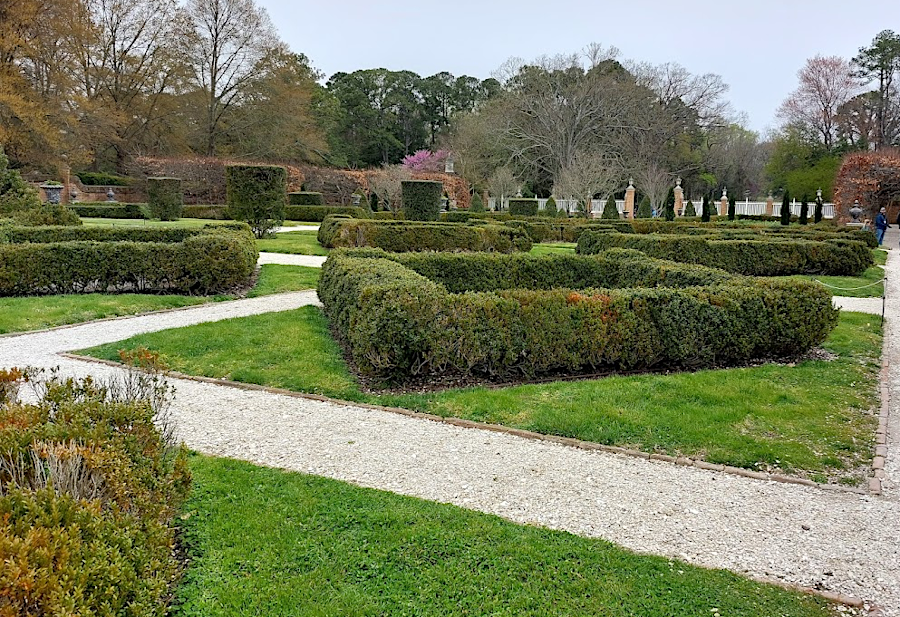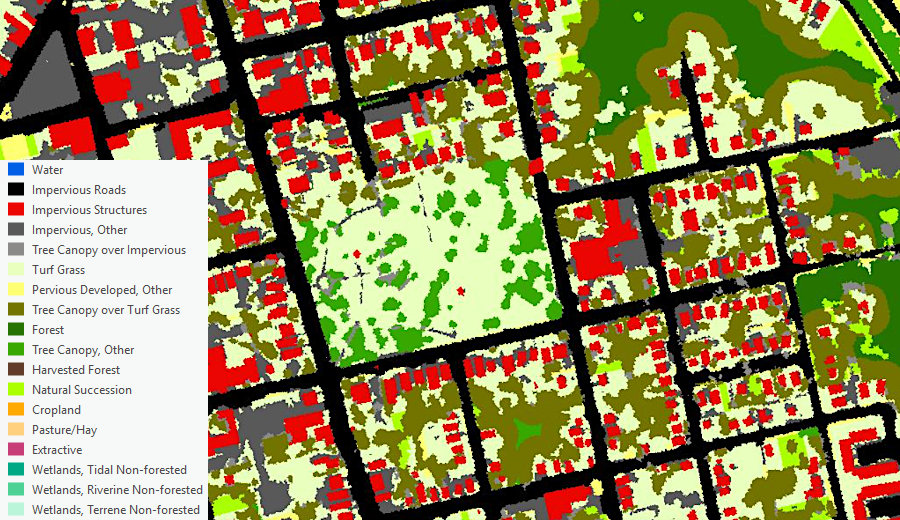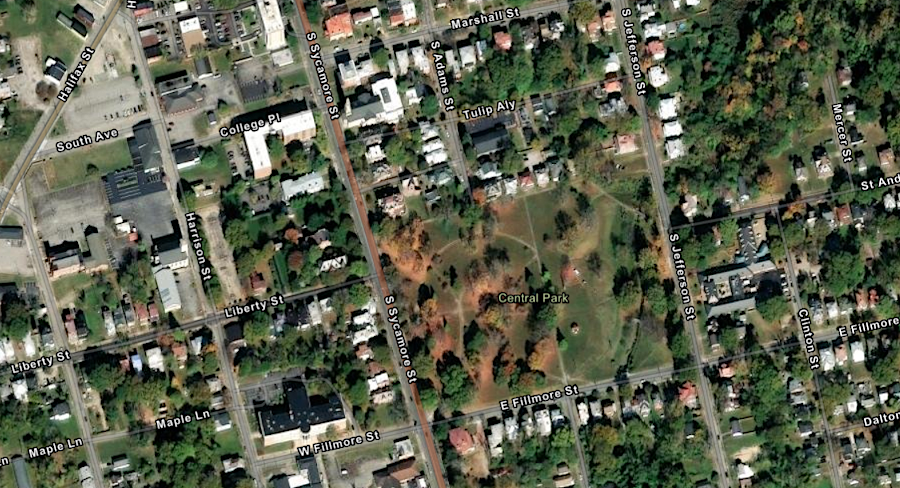
wealthy Virginians in the 1700's created turf and garden landscapes around brick mansions - including the Governor's Palace in Williamsburg

wealthy Virginians in the 1700's created turf and garden landscapes around brick mansions - including the Governor's Palace in Williamsburg
Colonization after 1607 triggered a massive alteration of the landscape. Forests were cleared for agriculture, so sunlight could reach the leaves of corn, wheat, tobacco and other crops. Forests growing on marginal soils and hilly sites not suited for growing row crops were cleared for pasture.
Forests naturally regrew on abandoned farmland, but the expansion of cities and suburbs has blocked that cycle. Trees are removed for construction of new housing units that are needed as Virginia's population continues to grow.
Typically, only a few token trees are replanted in subdivisions as new residents move in. A lawn at a modern suburban home is a standard amenity, even for townhomes. Mowing grass is a chore, but owning a lawn represents both control over the natural environment and the wealth to use land for scenic rather than productive purposes.
Subdivision developers create homeowners associations responsible for common areas that surround privately-owned land, such as steep hills, stream valleys and other unbuildable sites. Remnants of forests may survive in those spaces, but the biodiversity in such remnants habitats is constrained. Wildlife corridors are disrupted by the placement of new development. Birds and insects can access scattered patches of forest, but the population of forest-dwelling mammals plummets as habitat disappears.
Roads, structures, and other impervious surfaces occupy more and more land where trees could grow. Between 2014-18, 2,000 acres per year of forests in Virginia were lost to development.1


tree canopy at Central Park in Petersburg
Source: Chesapeake Conservancy, CBP Land Use/Land Cover Data Project; ESRI, ArcGIS Online
Counties, cities, and towns are responsible for authorizing new development. Decisions on long-range planning, zoning, and building permits are local decisions. Two state laws authorize local officials to require conservation or replacement of trees during development.
In Northern Virginia, where non-attainment jurisdictions have not met Federal air quality standards for ozone, local governments may pass an ordinance requiring developers to retain 10-30% of existing trees on a site. The minimum tree canopy or tree cover percentage is based on how much of the site will be shaded by healthy woody plant material exceeding five feet in height, 20 years after development. Where site conditions make such conservation uneconomic, developers have the option to pay into a "tree canopy bank" instead.2
Jurisdictions within the Chesapeake Bay, and jurisdictions with a population density of at least 75 people per square mile. may require tree replacement as part of permitting new development. Local governments may require replacing trees in order to create a 10-20% minimum tree canopy, as measured 20 years later. In addition, the City of Williamsburg has special authorization to require replacement to be effective after just 10 years.3
In 2024, the General Assembly passed two bills to authorize local governments statewide to require conservation or replacement of trees.
Governor Youngkin vetoed both of the bills. The bill to expand local authority to require replacing trees had achieved consensus support among stakeholders, but the Home Builders Association of Virginia had opposed expanding the authority to require conservation of existing trees.4